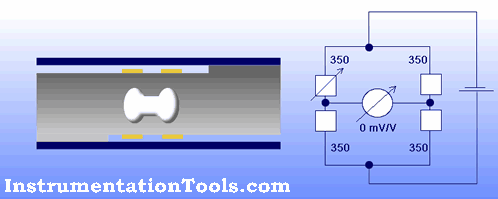Unleashing the Power of the Wheatstone Bridge
Introduction:
In the world of electrical engineering and measurement systems, signal conditioning plays a vital role in ensuring accurate and reliable data acquisition. Among the various techniques used, the Wheatstone bridge stands as a fundamental component in signal conditioning. In this blog, we will explore the functioning and diverse applications of the Wheatstone bridge, shedding light on its significance in modern measurement systems.
1. Understanding the Wheatstone Bridge:
The Wheatstone bridge is a circuit configuration that enables precise measurement of electrical resistance. It consists of four resistors arranged in a diamond shape, with an input voltage applied across the bridge. By adjusting one of the resistors, known as the variable resistor or the sensing element, the bridge can be balanced, indicating a null output voltage. The balanced state provides a reference point for accurately measuring unknown resistance or detecting changes in resistance.
2. How Does It Work?
The Wheatstone bridge operates based on the principle of comparing the unknown resistance with a known resistance. When the bridge is balanced, the voltage difference between the two output terminals is zero, indicating that the resistance being measured is equal to the known resistance. Any change in the resistance being measured will cause an imbalance in the bridge, resulting in a non-zero output voltage proportional to the change. This voltage can be further processed and utilized for measurement or control purposes.
 |
| https://bruunsgarage.dk/flowbaenk-del-4-naesten-klar/2016-11-24_10-05-54/ |
3. Applications of the Wheatstone Bridge:
The Wheatstone bridge finds extensive application in various fields, including:
- Strain Measurement: By incorporating strain gauges as the sensing element, the Wheatstone bridge becomes a powerful tool for measuring mechanical strain in structures, such as load cells, pressure sensors, and force transducers. The strain-induced resistance changes in the gauges cause bridge imbalance, allowing precise strain measurements.
- Temperature Sensing: Temperature-dependent resistors, such as thermistors and resistance temperature detectors (RTDs), can be used in a Wheatstone bridge to measure temperature variations accurately. The bridge output reflects the temperature changes based on the resistance-temperature characteristics of the sensing element.
- Sensor Calibration: The Wheatstone bridge provides a means to calibrate sensors by precisely adjusting the known resistance to match the sensor's output. This calibration technique ensures accurate measurements and enhances the reliability of sensor readings.
- Resistance Measurement: The Wheatstone bridge is widely employed to measure unknown resistance values by comparing them with known reference resistances. This method is utilized in applications such as resistance measurement of electrical components, strain gauge calibration, and material characterization.
 |
| https://instrumentationtools.com/load-cell-working-principle/ |
Conclusion:
Signal conditioning, facilitated by the Wheatstone bridge, revolutionizes the world of measurement systems. By providing a means to accurately measure resistance and detect changes, the Wheatstone bridge finds applications in strain measurement, temperature sensing, sensor calibration, and resistance measurement. Its versatility and precision make it a valuable tool in electrical engineering, allowing us to acquire reliable data, calibrate sensors, and understand the behavior of various physical phenomena. The Wheatstone bridge stands as a cornerstone in signal conditioning, empowering us to unlock the potential of precise measurements and pave the way for technological advancements.


